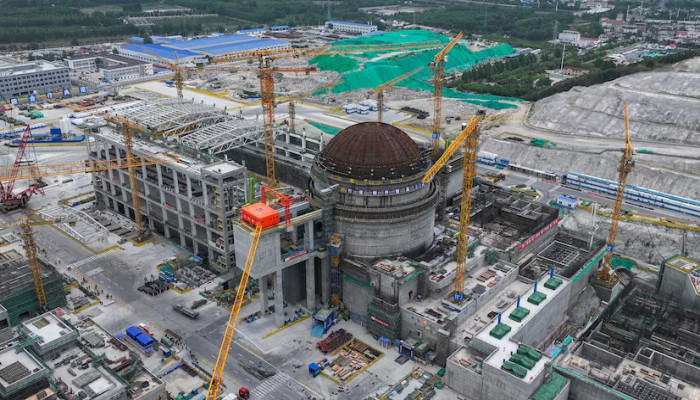China approves 11 new nuclear power reactors at five sites, aim to cut emissions
- In Reports
- 11:38 AM, Aug 20, 2024
- Myind Staff
China has approved 11 new nuclear reactors across five sites, marking a record number of permits as the country intensifies its reliance on atomic energy to reduce emissions.
According to China Energy News, the State Council authorised these reactors in Jiangsu, Shandong, Guangdong, Zhejiang, and Guangxi. The total investment for the 11 units is expected to be at least 220 billion yuan ($31 billion), with construction estimated to take around five years, as reported by financial publication Jiemian.
China has more nuclear reactors under construction than any other country and approved 10 new reactors in each of the last two years. According to BloombergNEF, China is expected to surpass France and the US to become the world's leading atomic power generator by 2030.
CGN Power Co., a listed unit of state-owned China General Nuclear Power Corp., announced in a Hong Kong stock exchange filing that it has received approvals for six reactors across three sites. China National Nuclear Corp. reported on WeChat that it has been given the go-ahead for three reactors, while State Power Investment Corp. said it received approval for two units.
According to the China Nuclear Energy Association, China operates 56 reactors, which meet about 5% of the country's total electricity demand. Citic Securities Co. predicts that Beijing is likely to approve around 10 new reactors annually over the next three to five years.
The new projects include a high-temperature gas-cooled reactor at the Xuwei plant in Jiangsu, which will be operated by CNNC. This reactor is a fourth-generation design, intended to provide both heat and electricity with advanced safety features, according to the company.
CNNC also announced it received approval for two Hualong One reactors at the Xuwei plant. Additionally, all six of CGN’s new reactors will be Hualong Ones. This design has become prevalent in recent years due to its use of nearly all Chinese-made components.
Image source: Bloomberg







Comments